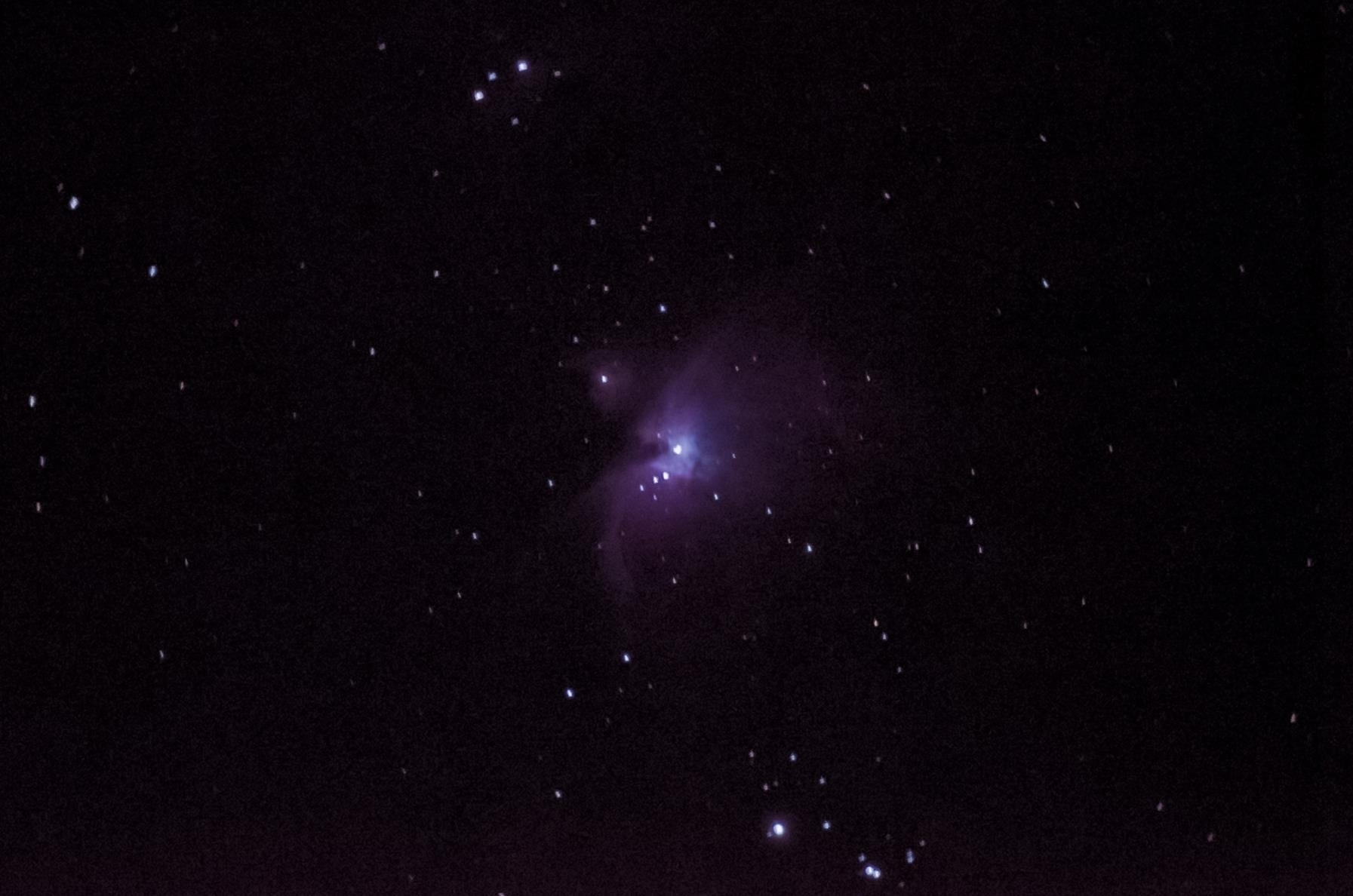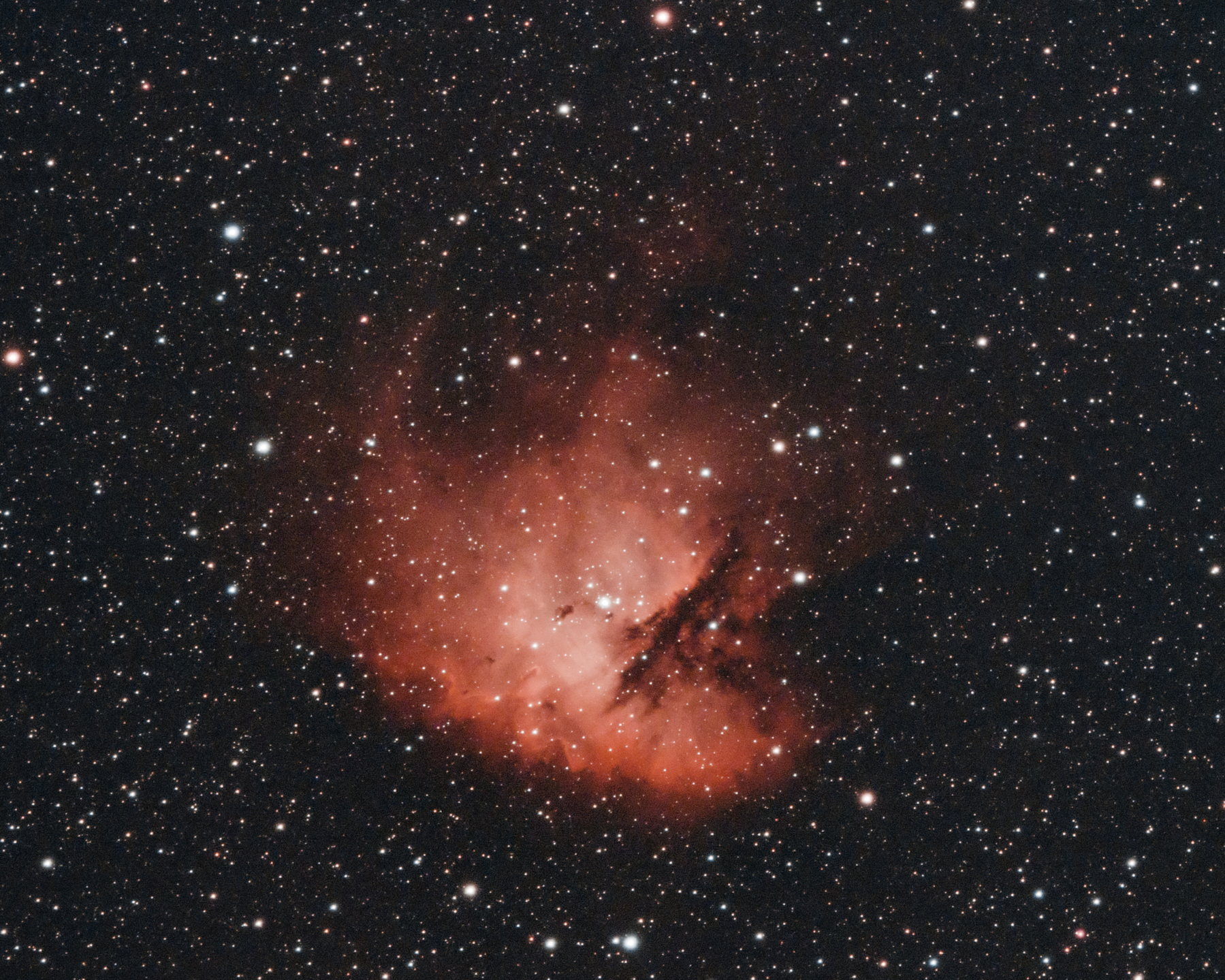astrophotography
California nebula (NGC1499) from the constellation Perseus. It is about 1000 light years away from us in the Orion arm of the Milky Way. This nebula glows because of intense radiation from a super hot class O star called Menkib.
Total exposure for this photo is about 4.75 hours.
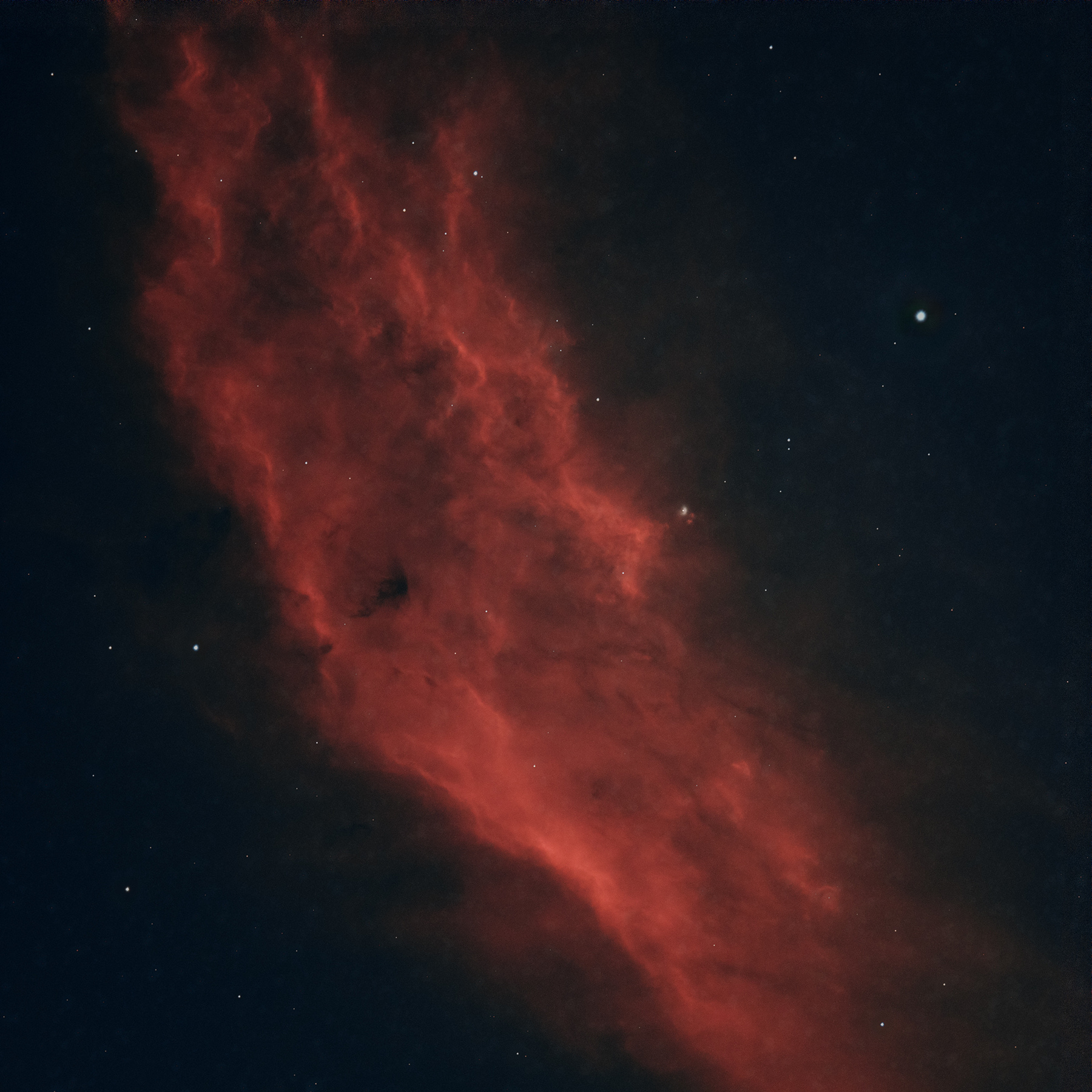
Mars in the Beehive
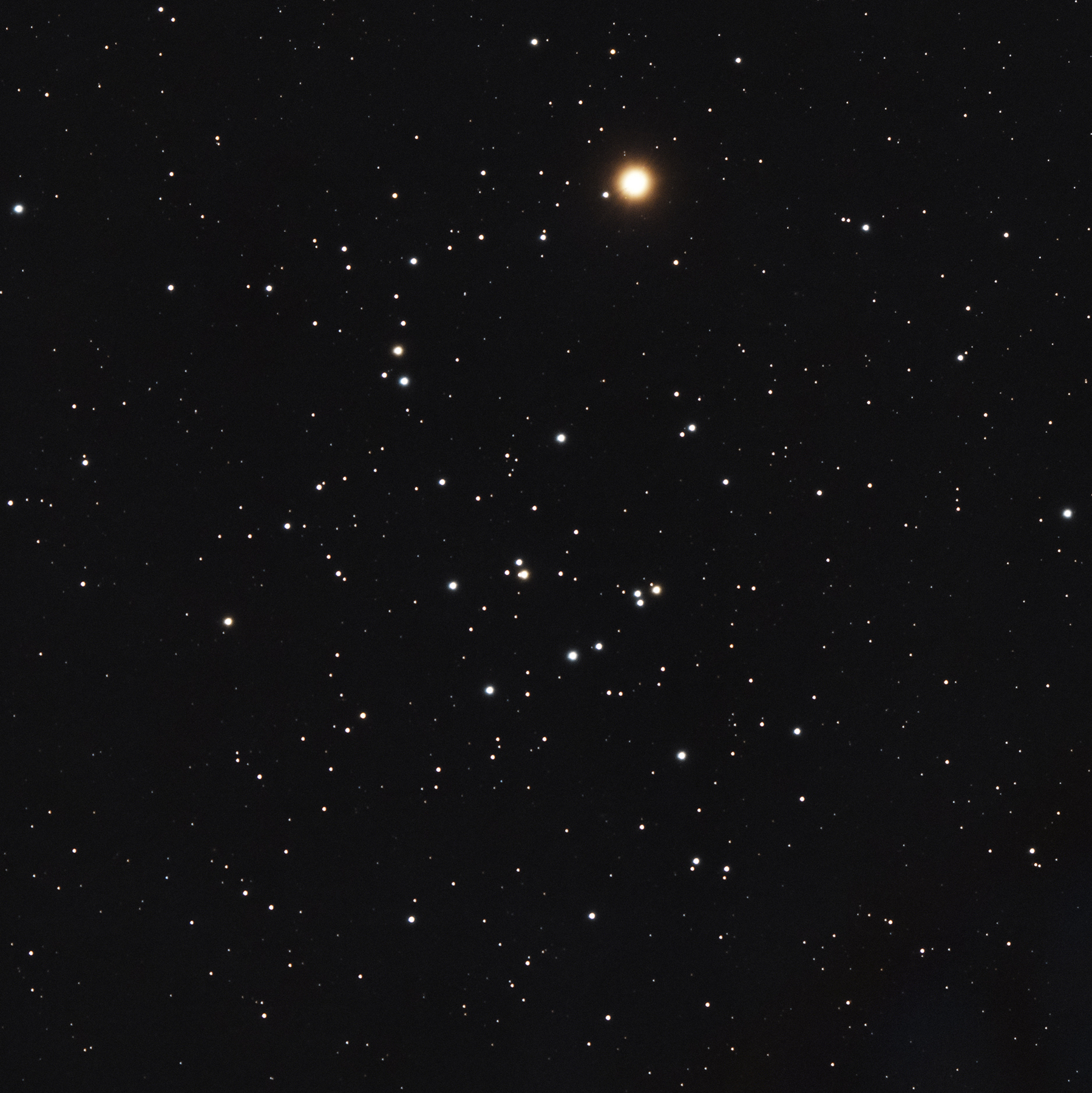
Mars and the Beehive star cluster (M44) in Cancer, which is one of the closest star clusters to us (at about 600 light years) and it can be seen with naked eyes. All the stars in this cluster are quite young - only ~600 million years of age.
Supernova SN2023ixf
Supernova SN2023ixf was spotted on May 19th and it continues to brighten. Took the top image on May 23rd and for comparison is an image from April 30th on the bottom. This supernova will continue to brighten over the next few days. This supernova is in galaxy M101 which is 21 million light years away. That means the event we are watching "live in real-time" actually happened 21 million years ago.
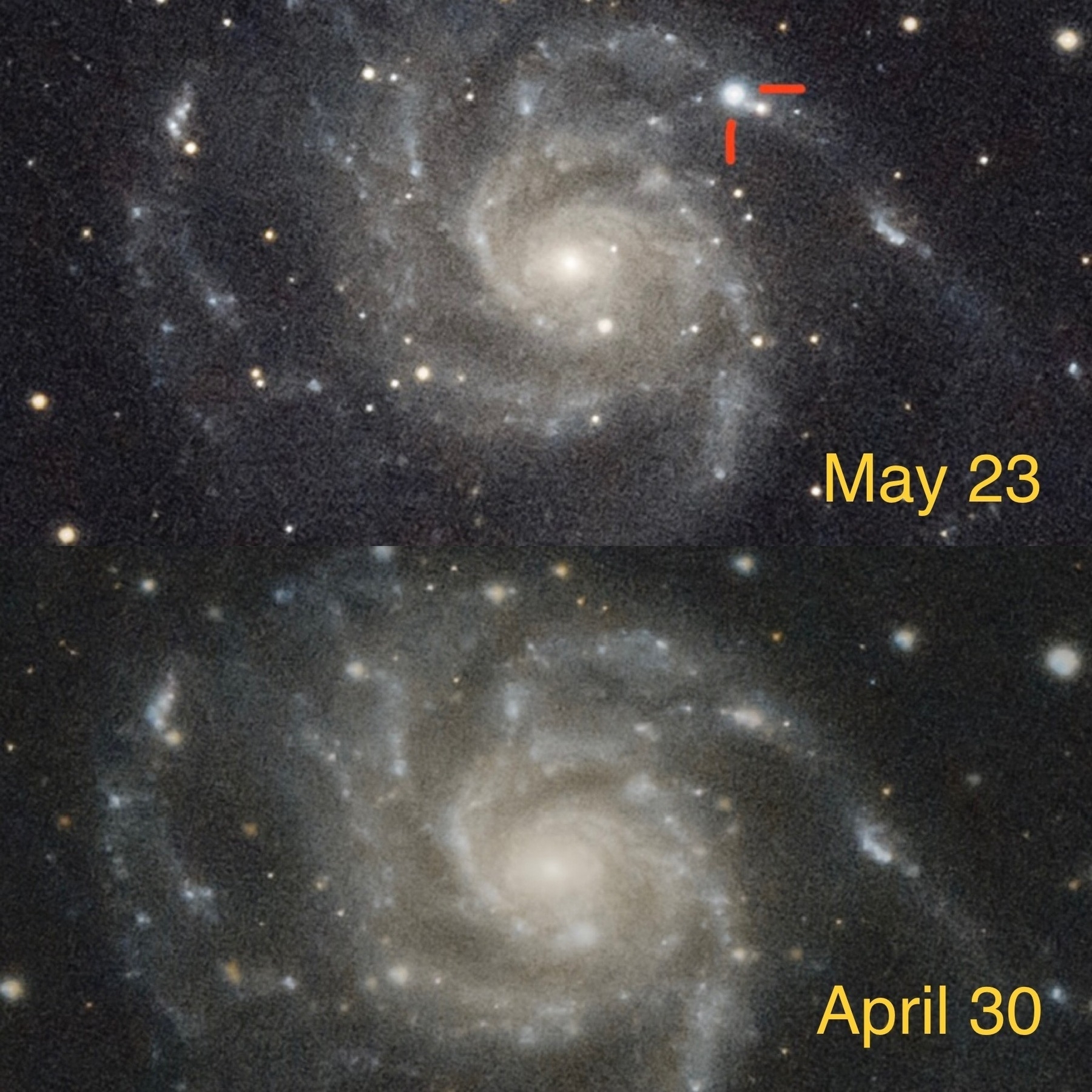
Rosette nebula - April 2023
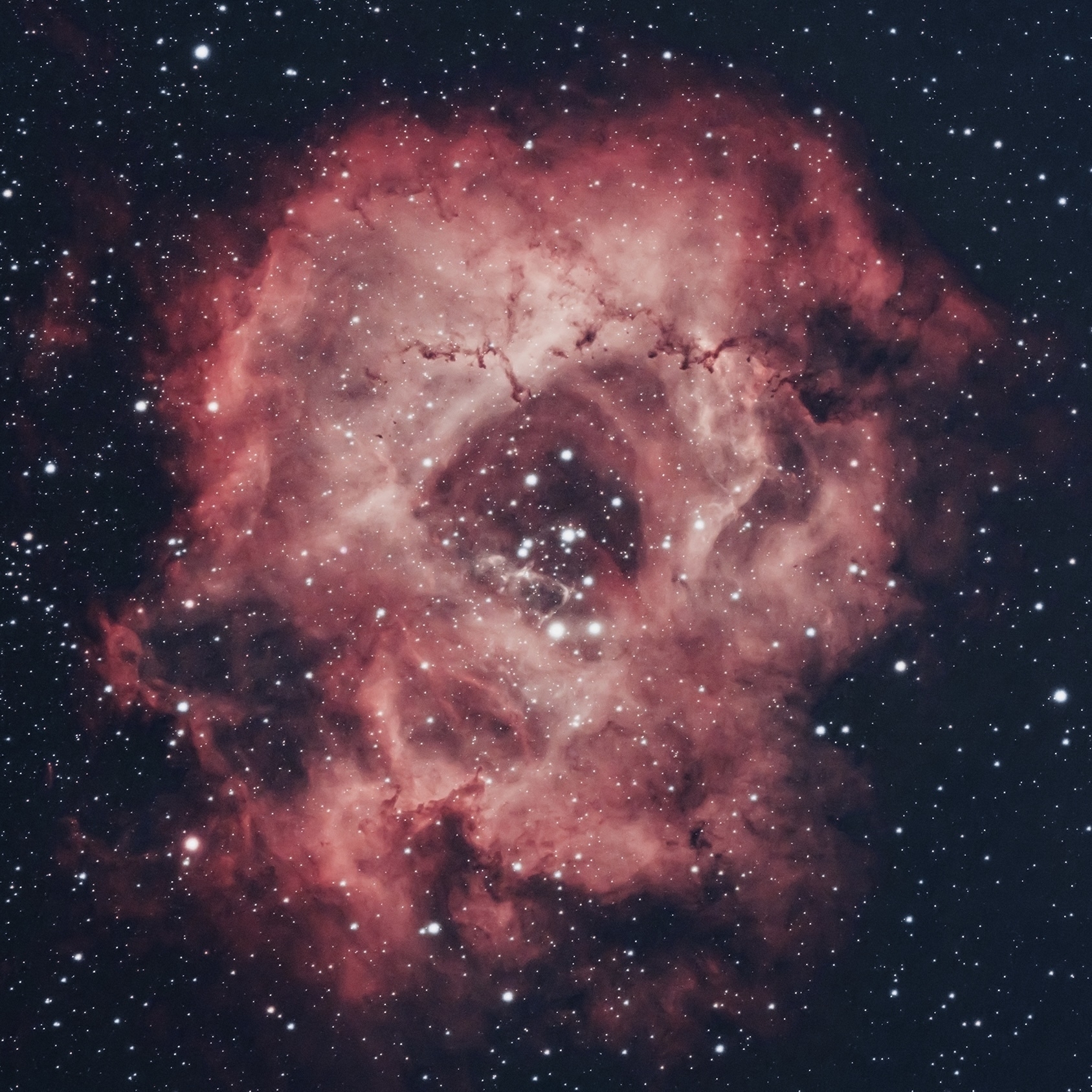
The Rosette nebula from Monoceros constellation at ~5000 light years, is one of the brightest nebula in the sky. The cluster of young stars (~4million years old) in the center provides the energy that makes this cloud glow. As always, the streaks of dark dust are the most striking features.
This image is a stack of forty 3 minute exposures (total exposure of 2 hours) taken with a 2.5 inch refracting telescope, William Optics ZenithStar 61, attached to ZWO ASI533MC-Pro camera with Optolong LeXtreme narrowband filter.
Mars and M35
Mars visiting Gemini on March 30, 2023. Open star cluster M35 at the bottom is at 2600 light years away and made up of young stars that are only 100 million years old. At the bottom right, the cluster of yellow stars (NGC2158) is made up of stars that are 10 times older and 6 times farther.
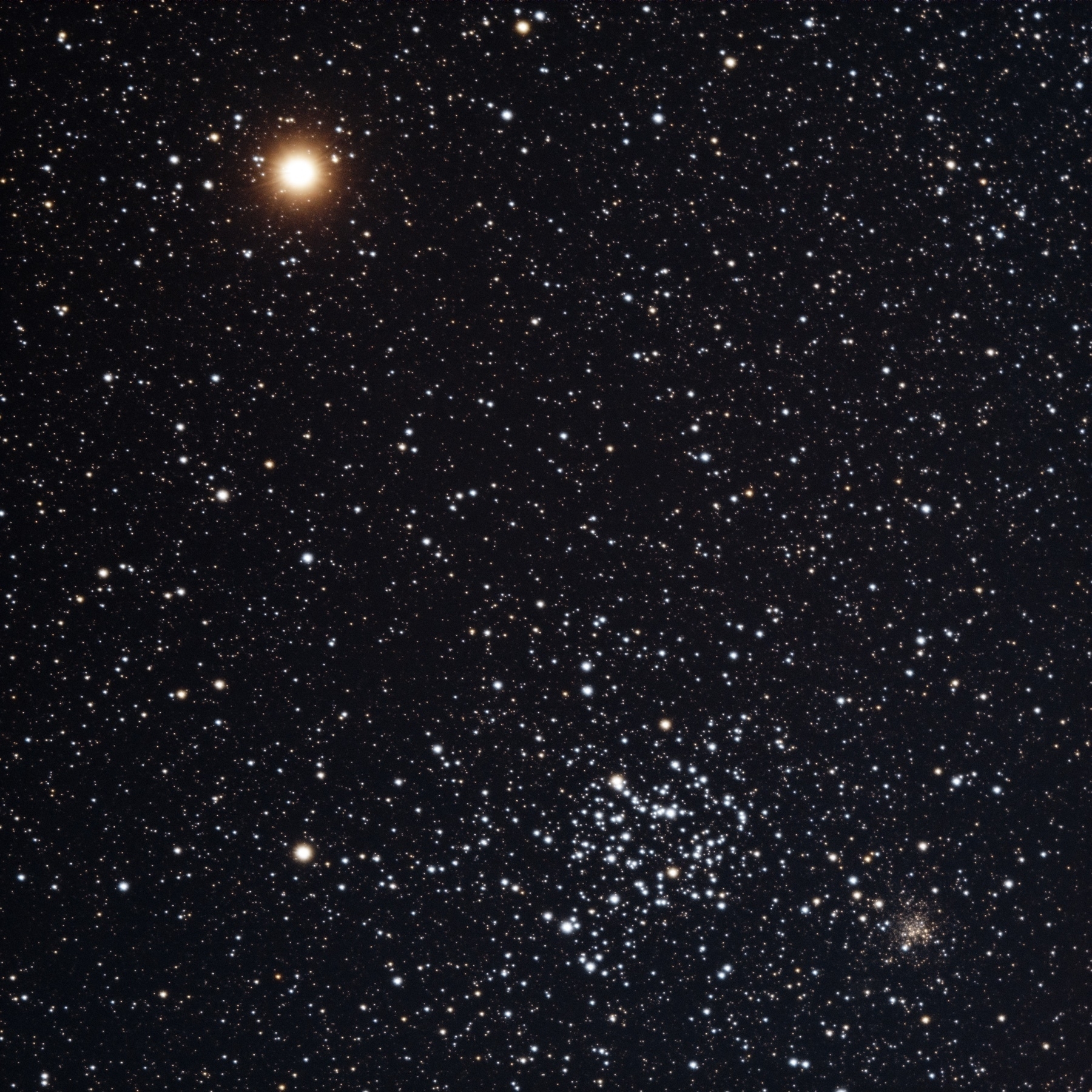
Venus Jupiter conjunction
After missing the closest approach yesterday, I was relieved that I caught some break in the clouds to view the Venus and Jupiter conjunction.
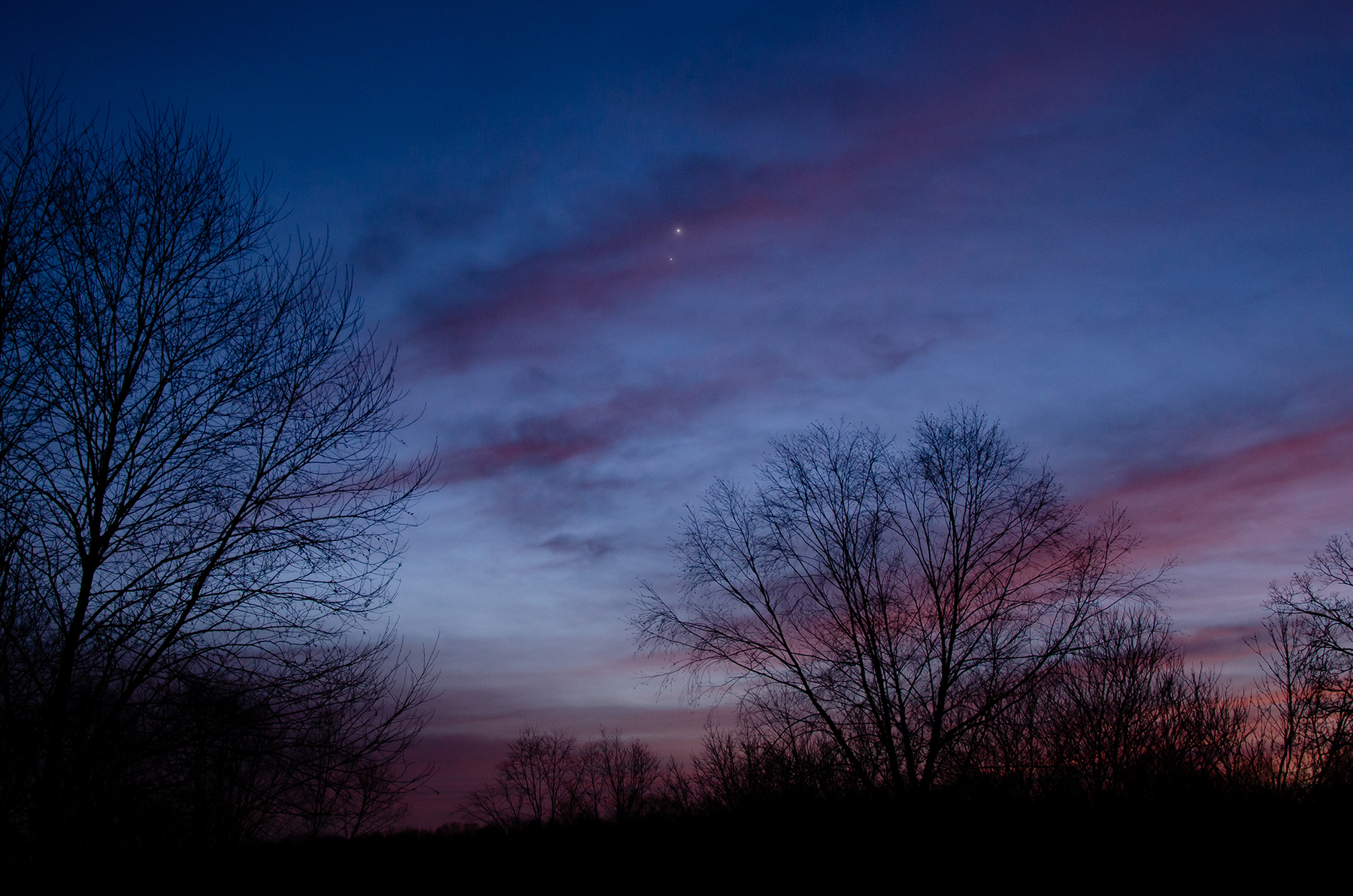
The cloud bands added a nice glow to the planets. The Gallelian moons Callisto, Ganymede, and Europa are seen above Jupiter and Io is on the other side.
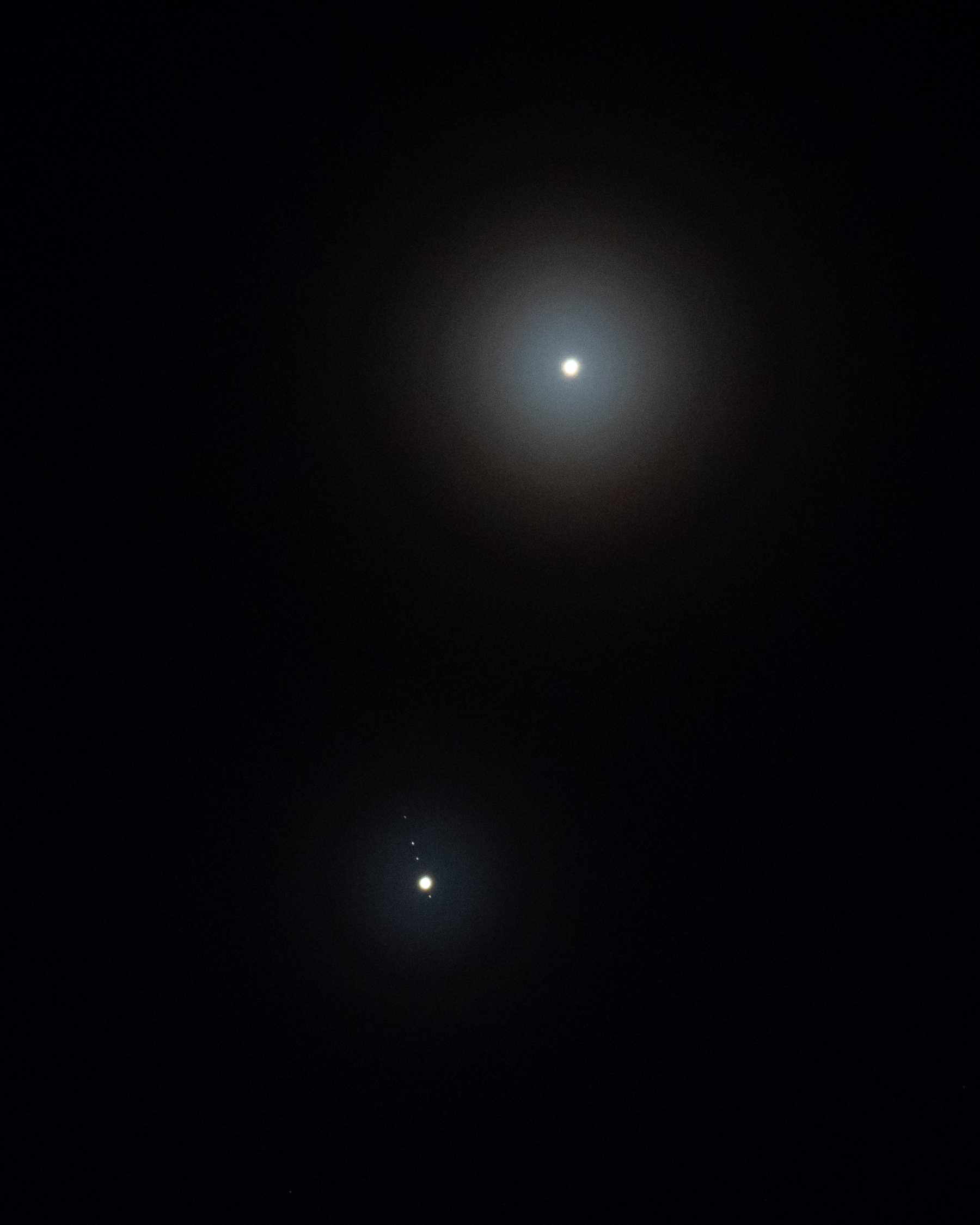
Airplanes kept photobombing while I was shooting Venus and Jupiter.
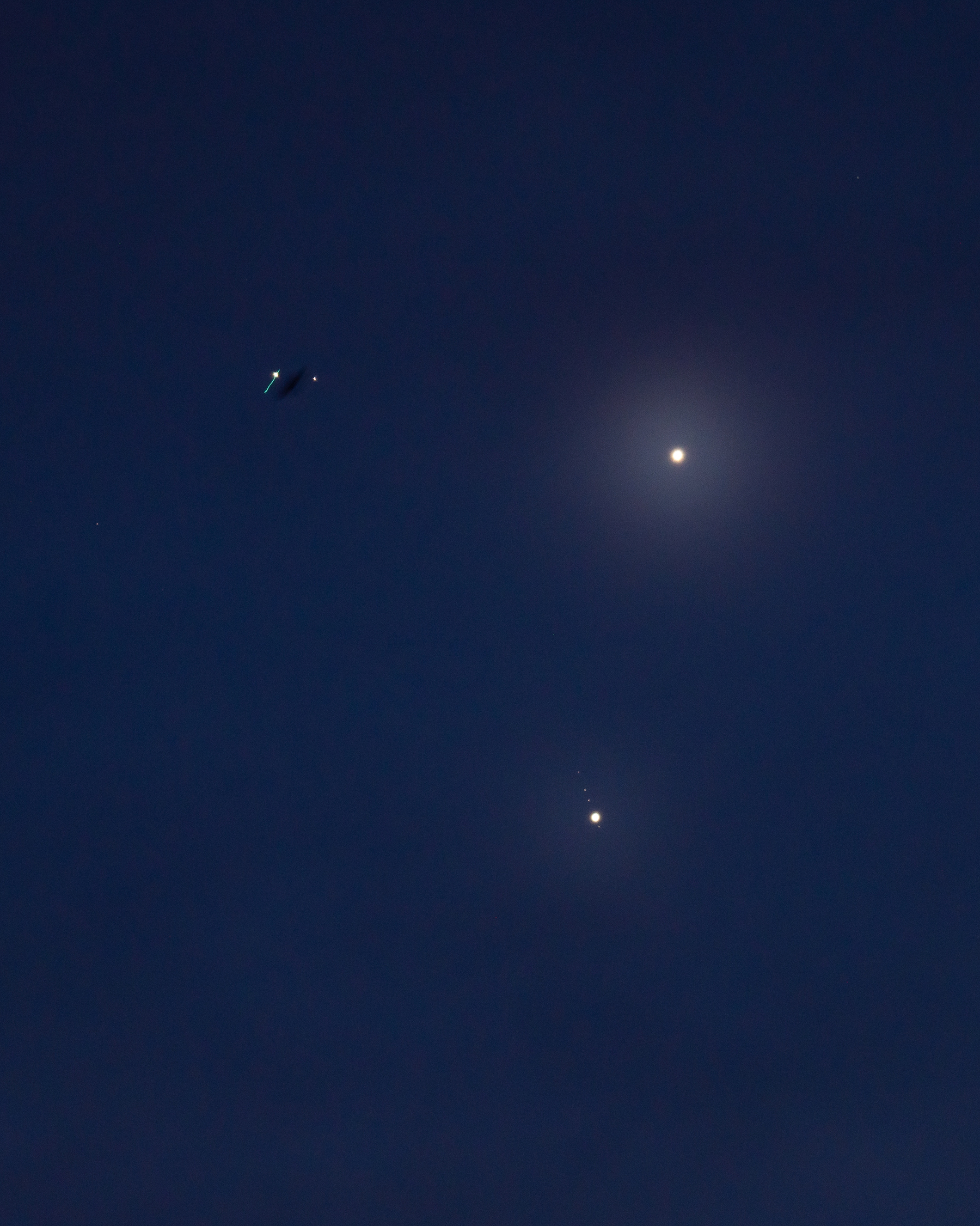
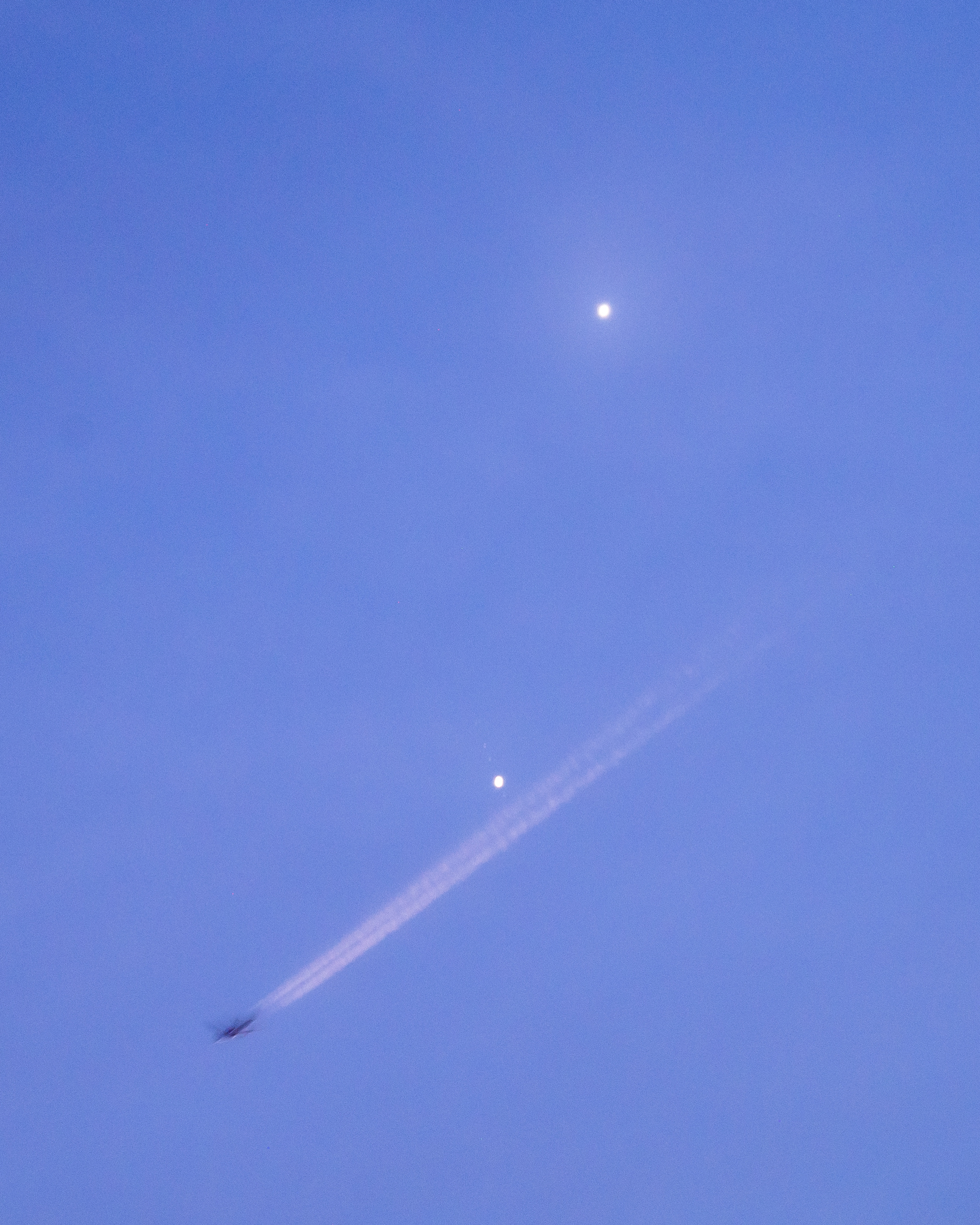
Moon, Jupiter and Venus
Moon, Jupiter and Venus in the western sky. Couldn’t catch them when they were closer to each other a couple of days ago. In the third photo, the moons of Jupiter can be seen if you zoom in.
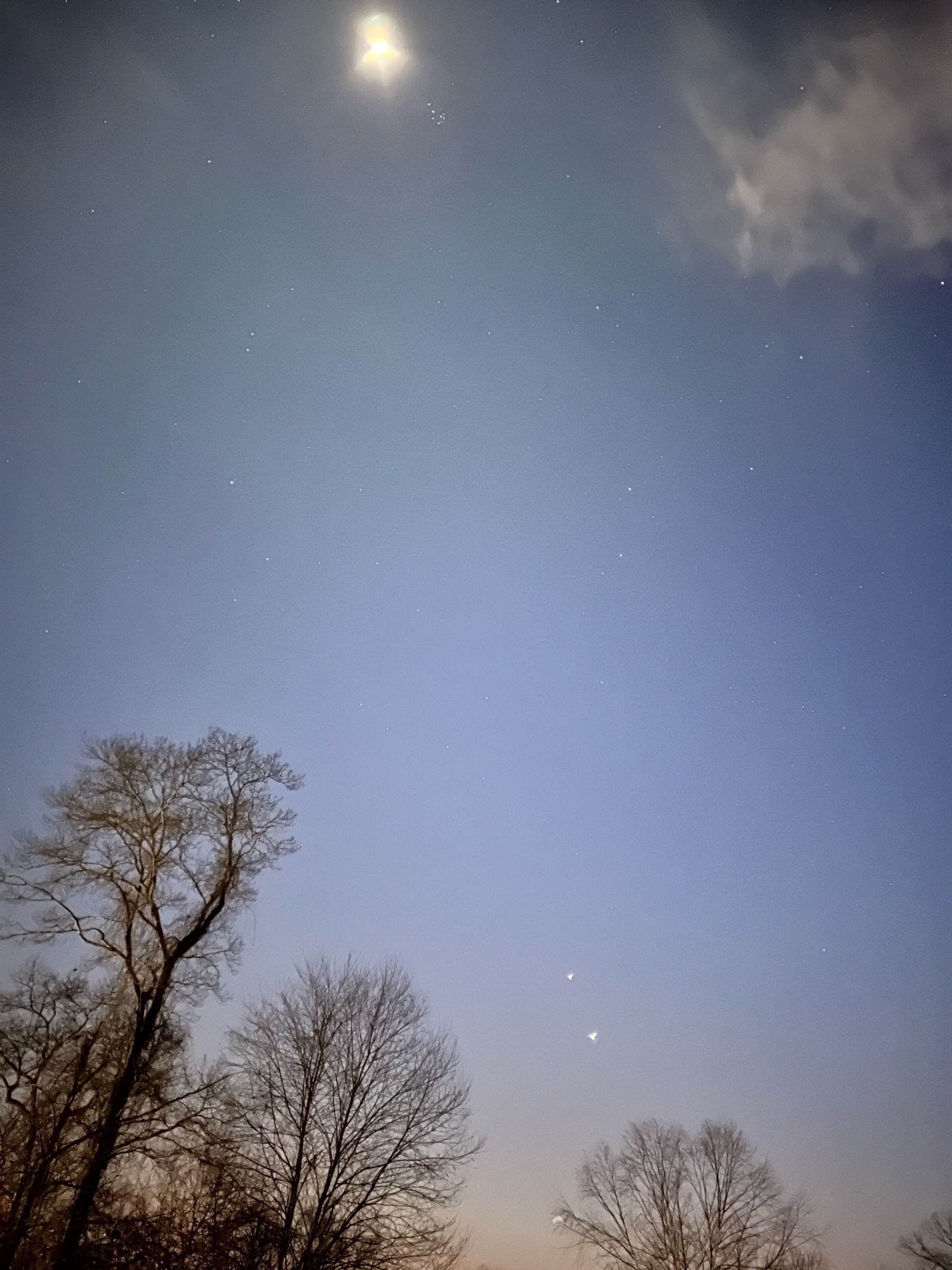

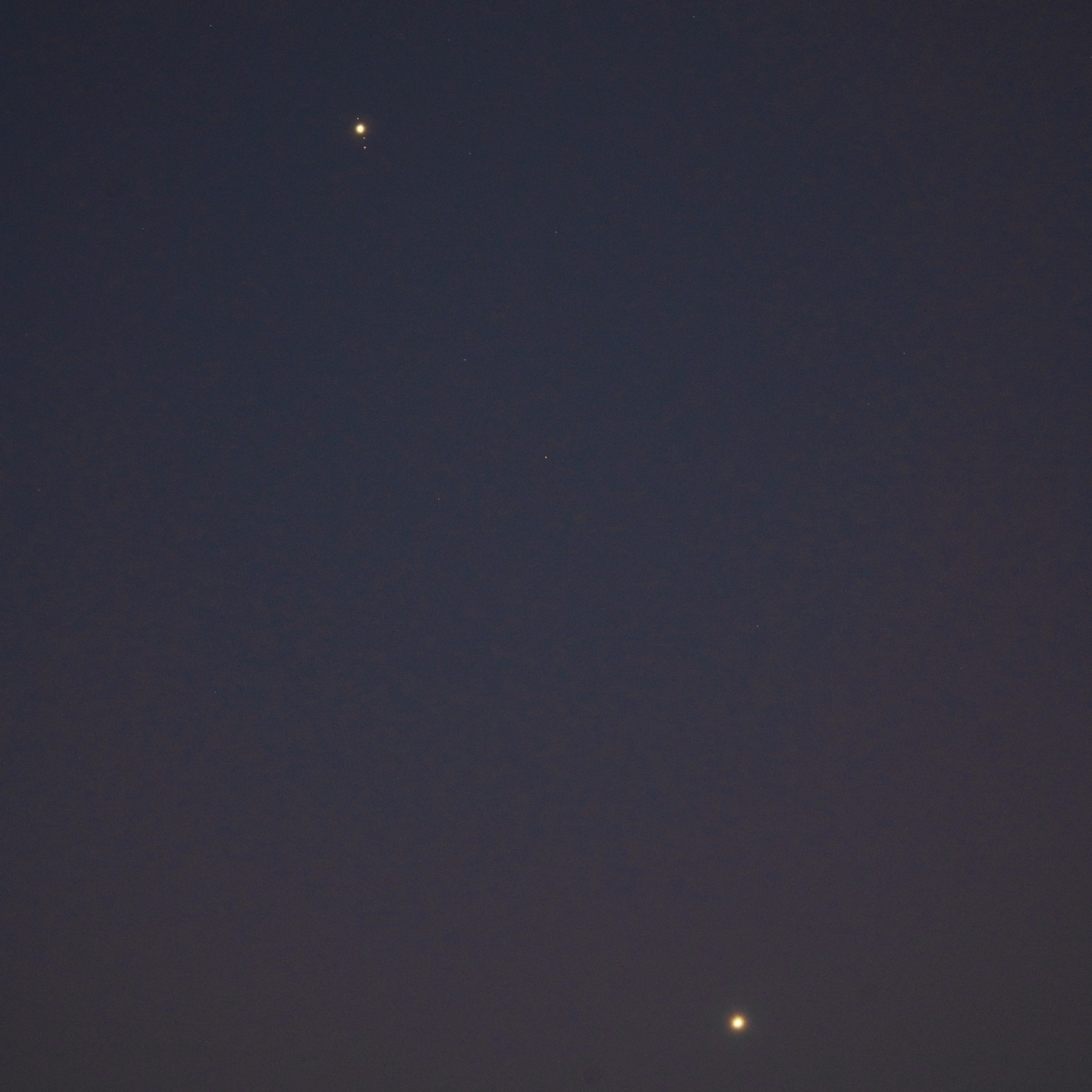

Canvas print
Got this photo of Elephant trunk nebula printed on canvas. It looks quite good considering its big size - 20x30 inches. Wasn’t sure how it will turn out. Last week, it was also featured on this website. They wrote such a nice description.
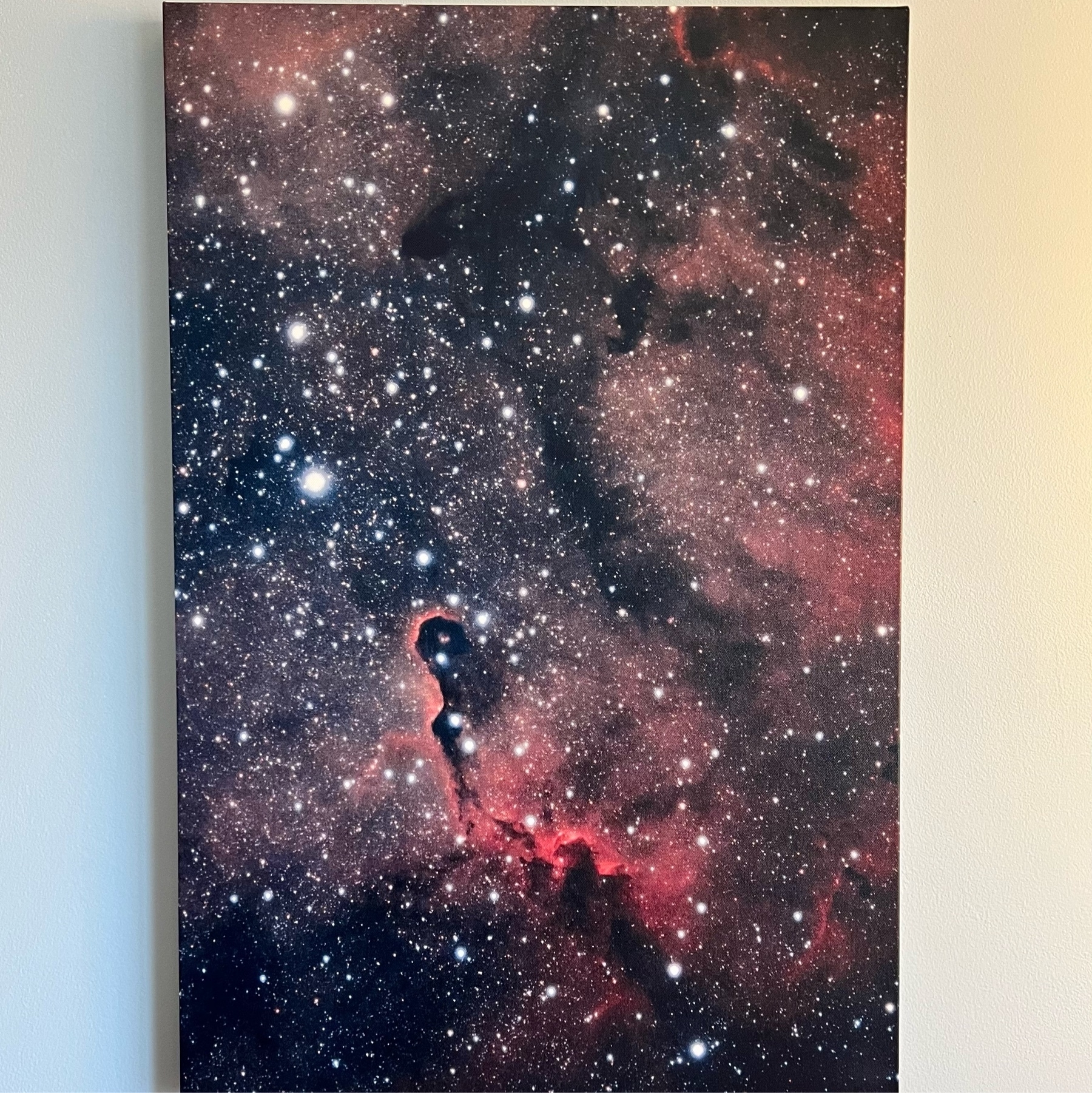
The Pleiades
The Pleiades (M45) aka The Seven Sisters aka Subaru is an open star cluster ~444 light years away. It is the nearest star cluster to us. The reflection nebulae around the young stars are left from the time of their formation about 100 million years ago.
WO ZS61; ZWO ASI533MC-Pro; 70 min (35x2m) total exp.
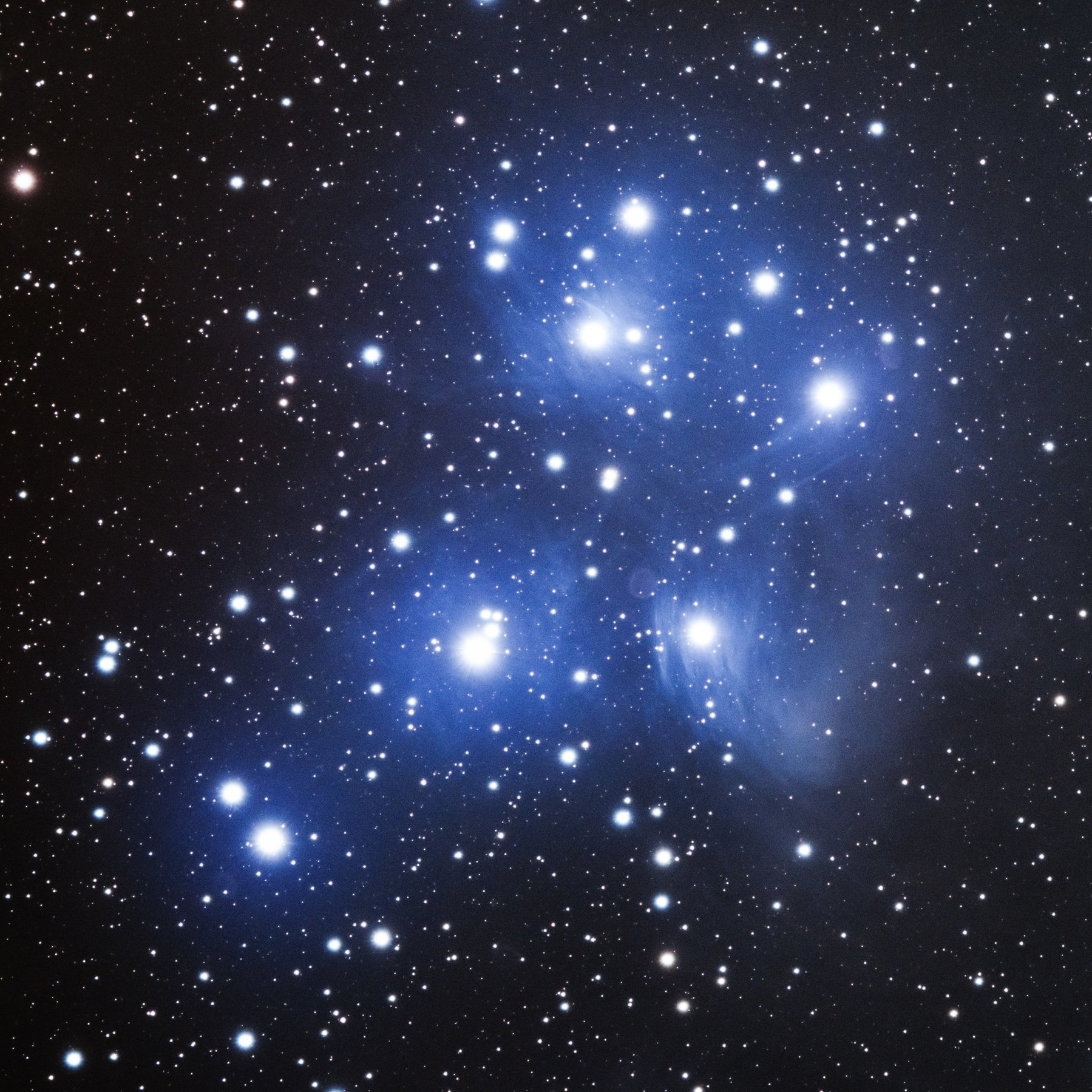
Running man and Orion nebulae
This must be my best effort at capturing the running man and Orion nebulae so far. This nebula is a region of massive star formation and is closest of such kind to Earth at ~1300 light years.
Taken with WO ZS61; ZWO ASI533MC-Pro. Only 40 one minute subs without any narrowband filter. Processed with Siril and Photoshop.
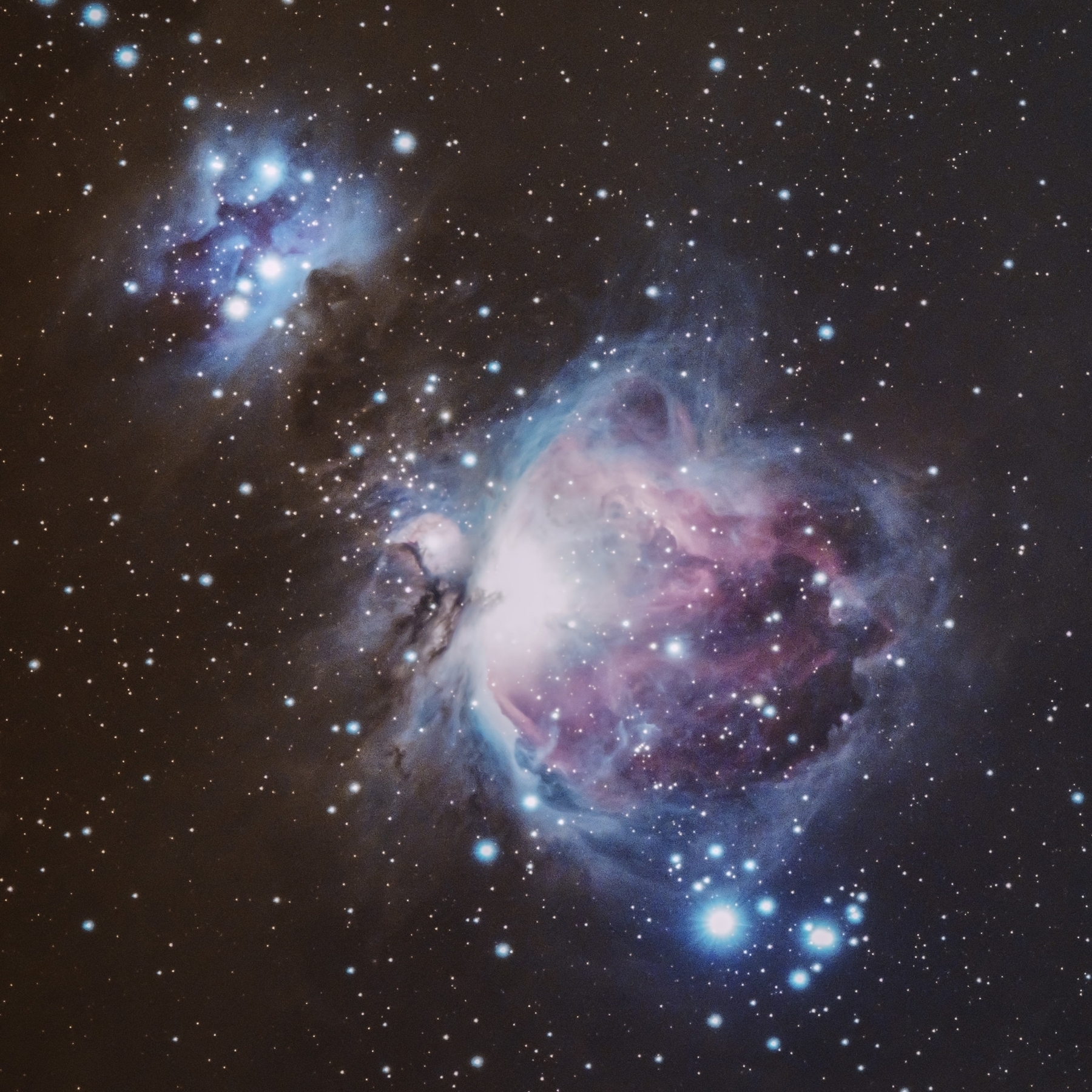
Veil nebula print
Got my Veil nebula photo printed. This is the first time for me to get an acrylic print. It was expensive but I see why that was so. It seems like the print is mounted under a clear ~4mm thick piece of plastic (acrylic?!). It looks great. Can’t wait to put it on a wall.
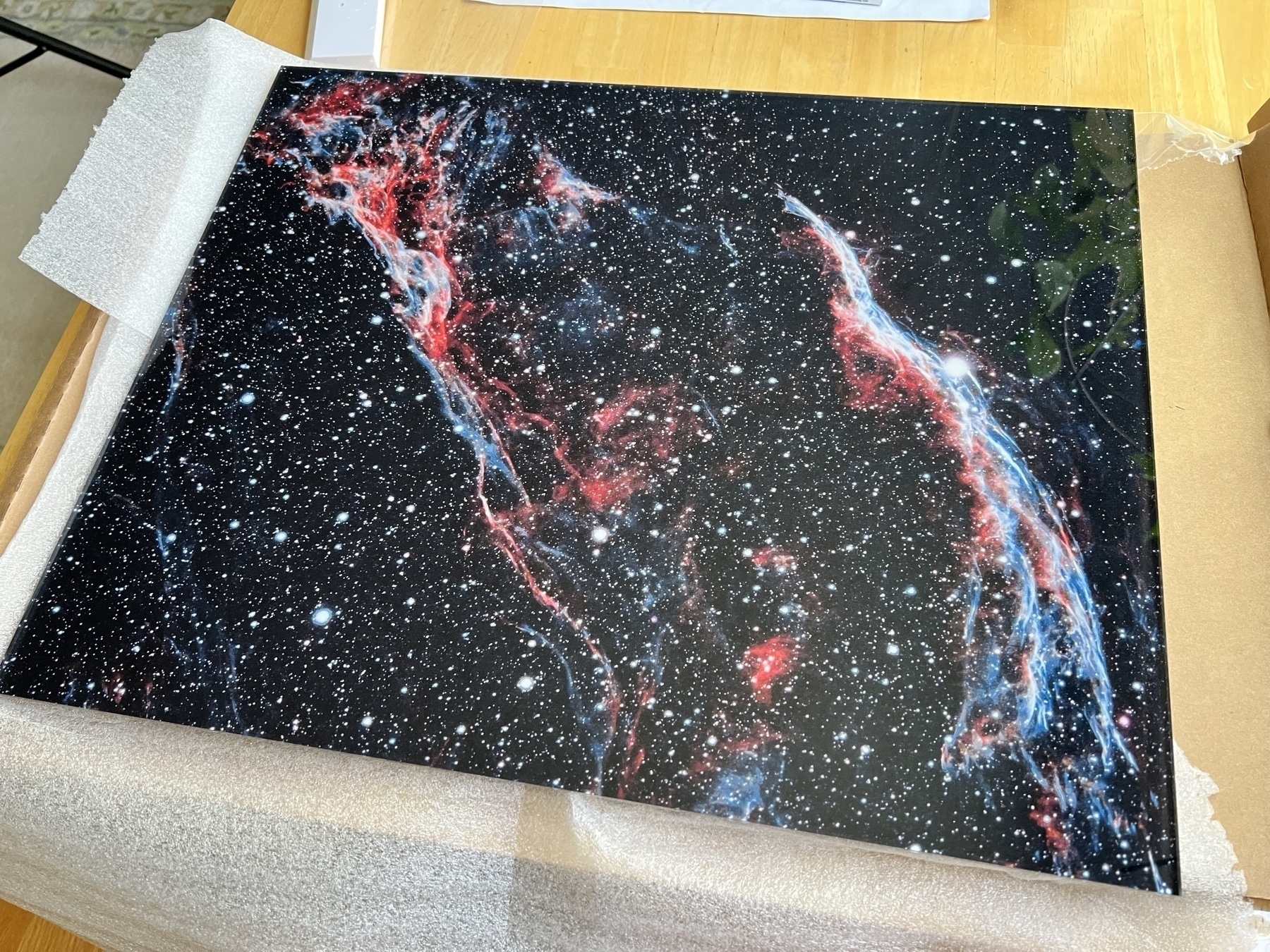
Green comet
Comet C2022/E3 (ZTF) or the green comet as mentioned in the news was captured on the night of Friday (1/27) from my front yard. The relative movement of the comet over that time can be seen as the background stars made startrails.
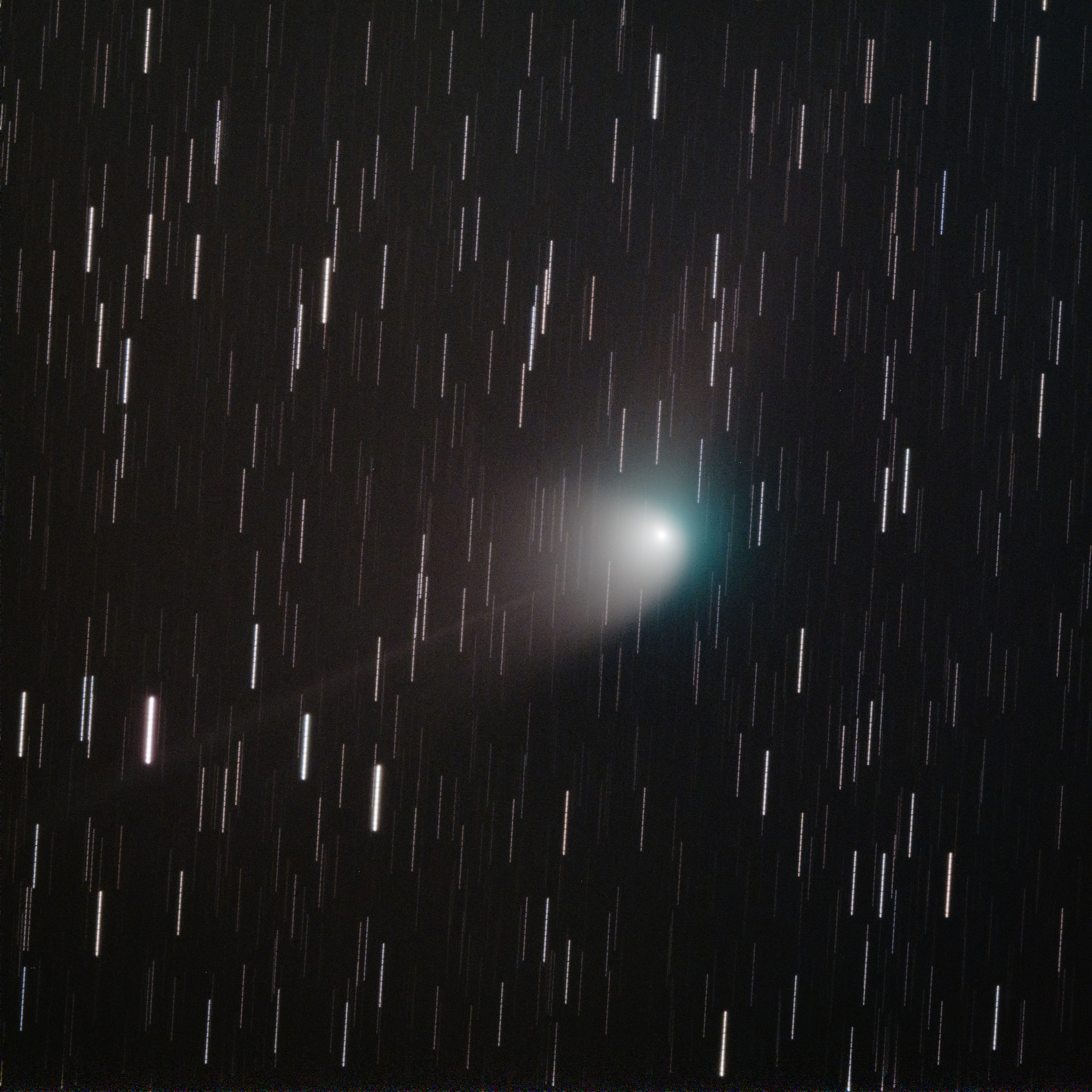
In the second image, the processing was done a little differently to suppress the stars and that makes the comet's dust tail more prominent.
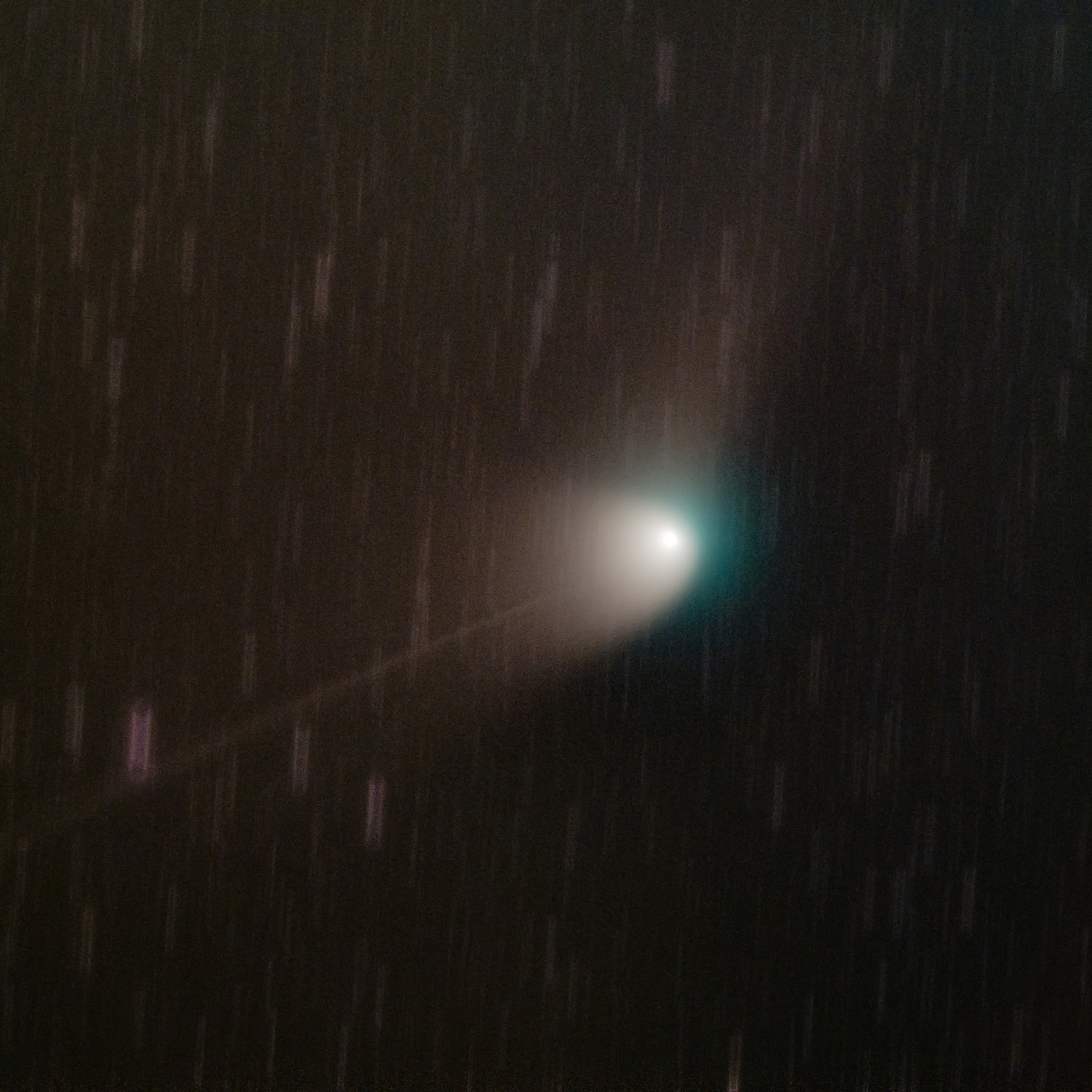
Western Veil nebula
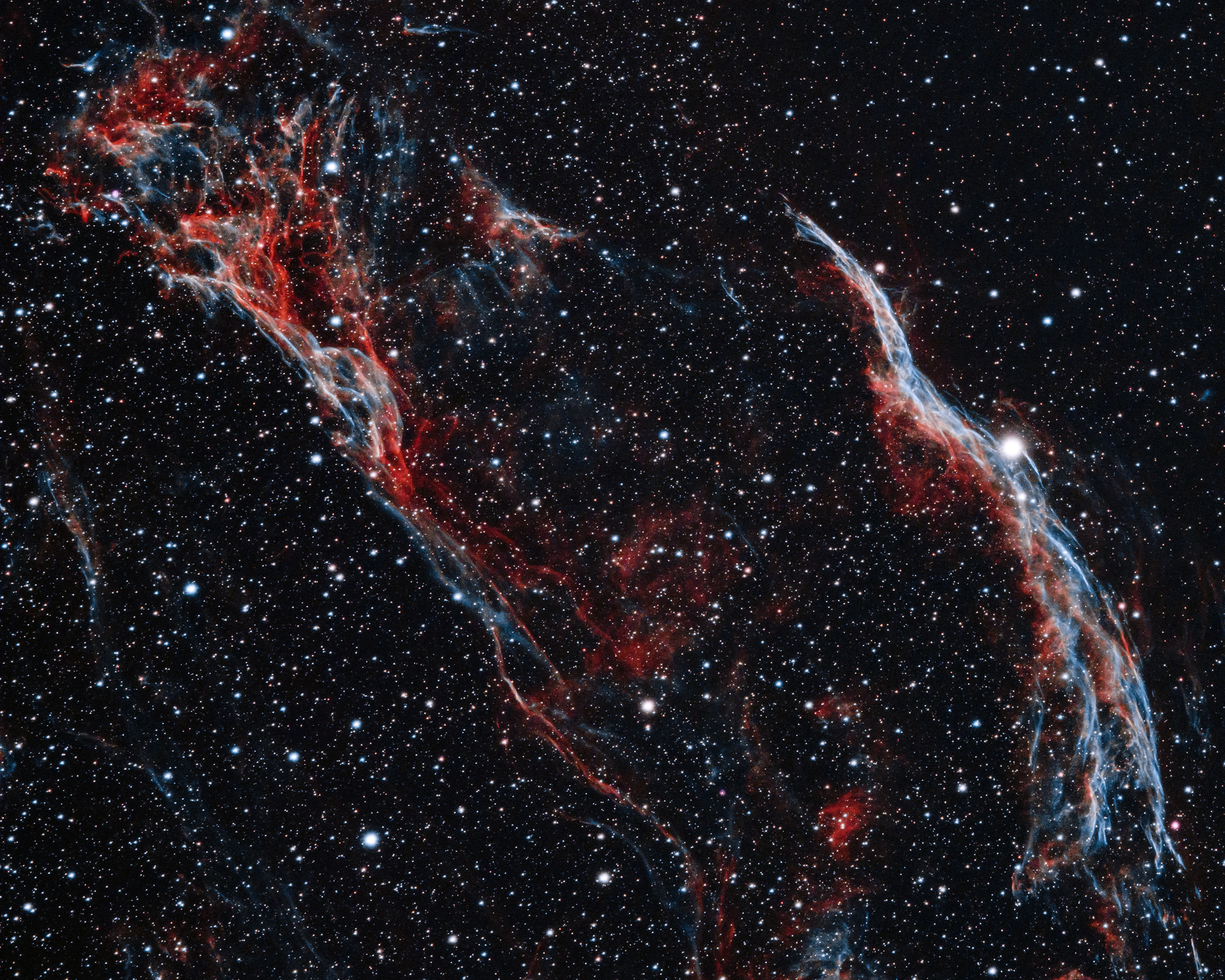
A part of the Veil nebula complex from Cygnus. This is Pickering’s triangle and Witch’s broom (NGC6960). This supernova remnant glows in Halpha and Oiii frequencies which is perfect for LeXtreme narrowband filter that selects those frequencies. I have tried this image several times before but this 4 hour exposure is the best so far. There is so much detail and color of the nebula that I couldn’t capture before.
Interestingly, the bright star near Witch’s broom, 52 Cygni is at 290 light years while the veil nebula is at almost 8 times that distance at 2400 light years. This supernova happened between 10,000 and 20,000 years ago. Anyone looking at the sky at that time probably saw a star much brighter than Venus.
WO ZS61 - ZWO ASI533MC-PRO - LeXtreme - 80 x 3 min - SIRIL - PS
Wide angle long exposure photos
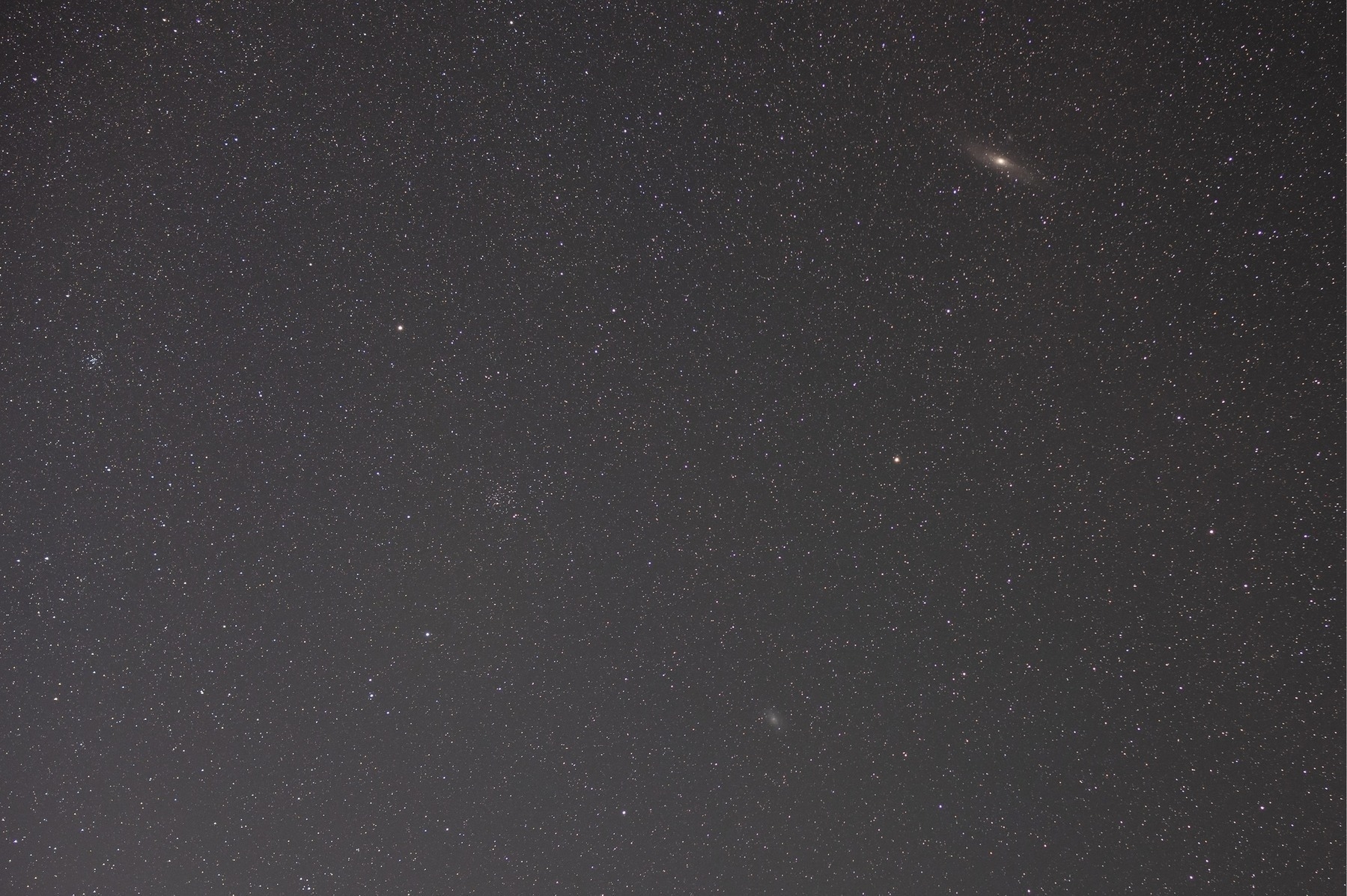
Playing with long exposure (3 mins) photos with a 40 mm lens attached to Nikon Z6 on a SkyWatcher star tracker. Here is one that shows Andromeda galaxy (M31), top right and Triangulum Galaxy (M33), bottom center. Also two open star clusters: M34 in Perseus (left edge) and NGC 752 in Andromeda (left center). This is just a single image with contrast adjustments in Photoshop, not a stack of multiple images.
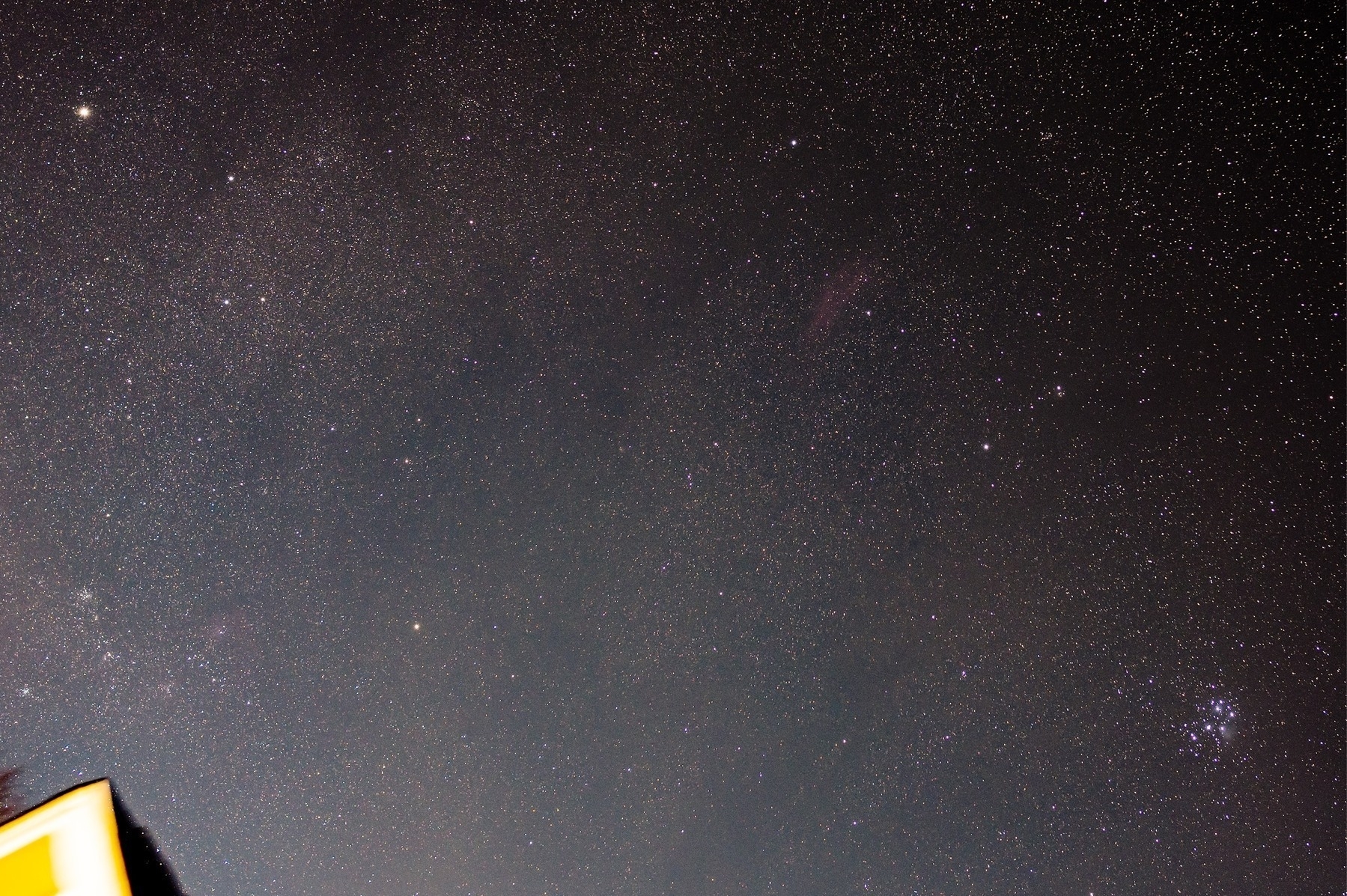
Another long exposure (3 min) photo showing Pleiades (bottom right), and ghostly reddish glow of California nebula (right of center). The bright star at top left is Capella and just above the roof, open clusters M36 and M38 are seen along with Flaming star and tadpoles nebula region in Auriga.
Bubble nebula - Nov2022
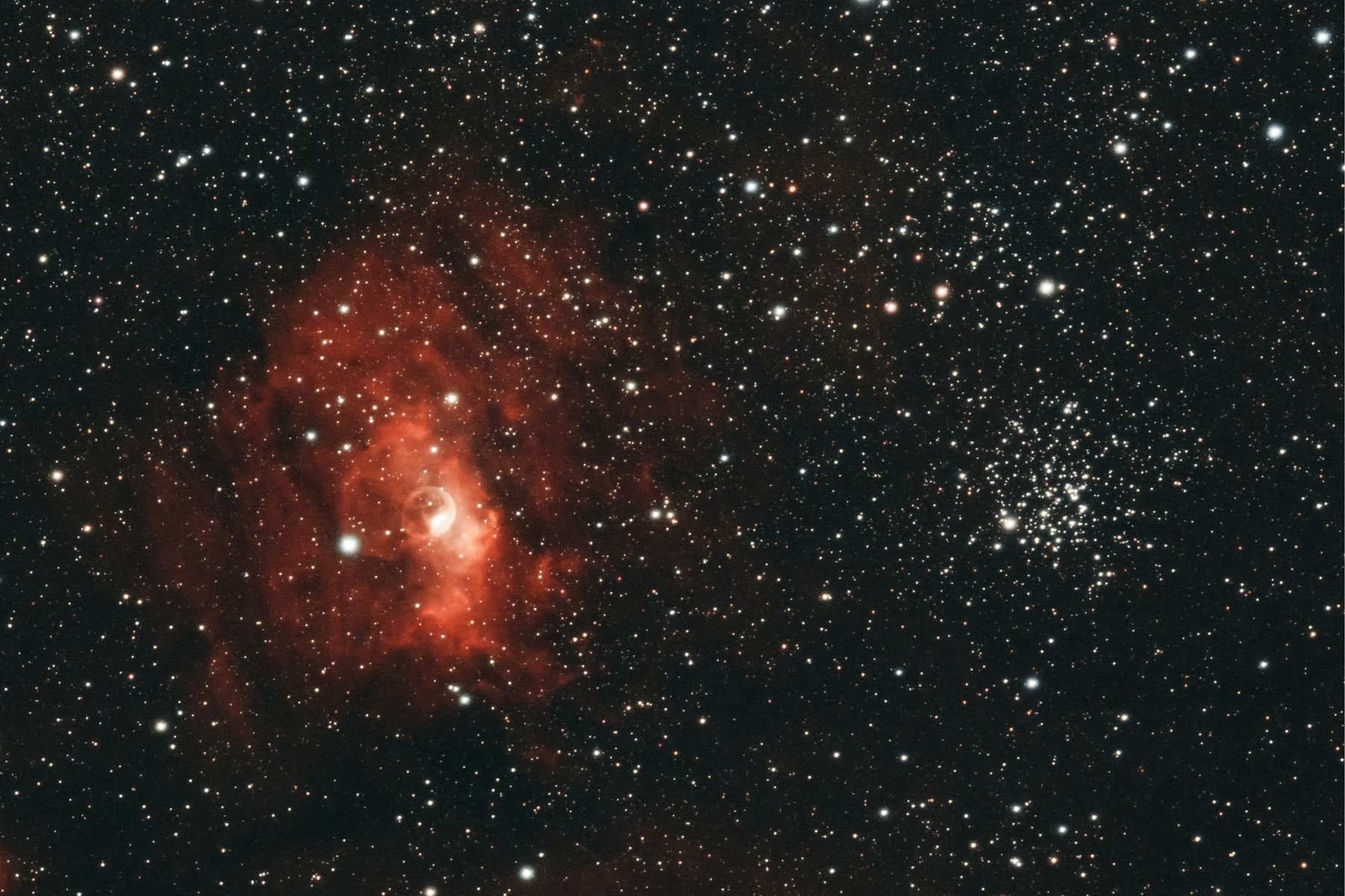
The Bubble nebula (NGC 7635) and an open cluster M52 in the constellation Cassiopeia. They appear next to each other but the nebula is ~11000 LY away while M52 is closer at a distance of only ~5000 LY. The bubble is about 10 LY across and is formed because of the intense radiation from the star inside it pushing the interstellar gas and dust.
This image consists of almost 3 hours of total exposure (35x5m). Optolong LeXtreme narrowband filter with ZWO ASI533MC-pro on WO ZS61. Processed with SIRIL and PS.
Lunar eclipse composites
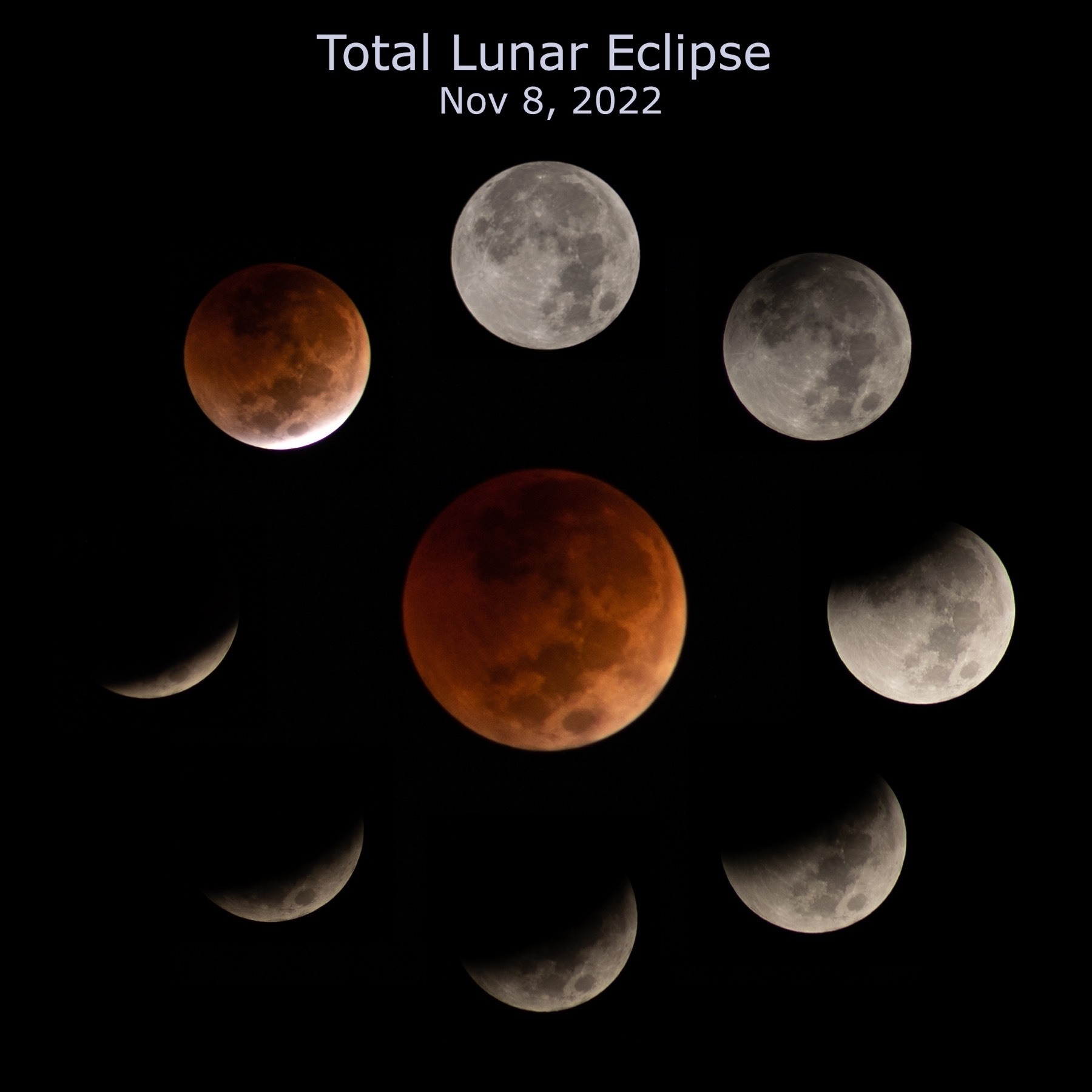
Here are attempts to put together the photos taken during the course of yesterday's total lunar eclipse - one as a composite image and other a timelapse video.
Total lunar eclipse - Nov 8, 2022
It is hard to get excited about lunar eclipses. They are not as dramatic as the solar ones. The eclipse started at around 3 am local time and the sky was supposed to be clear. Without that “cloudy sky” excuse, I decided to wake up to watch it from start to end. Once I was up and started taking photos every few minutes, it was fun to watch the slow and steady progress of earth’s shadow covering up the moon. I am glad I viewed it as the next lunar eclipse visible for us will be in 2025.
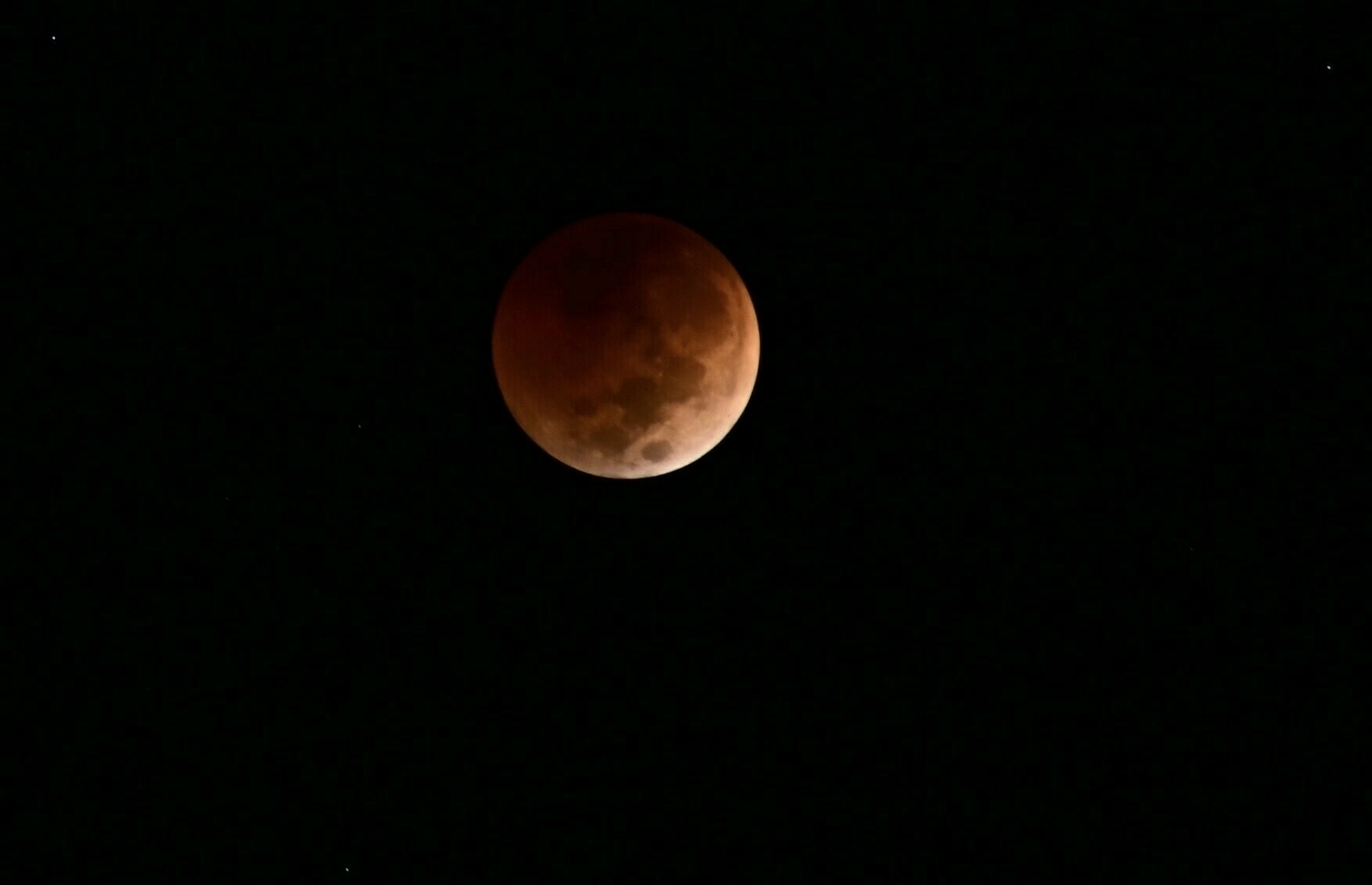
Eagle nebula - Oct2022

Eagle nebula aka Star Queen nebula (M16) in constellation Serpens, at about 7000 light years is home to the "Pillars of Creation" made famous by Hubble telescope. I always wanted to capture this but, my Southern sky is not completely open. I only get about one hour window for capturing these objects closer to the Southern horizon.
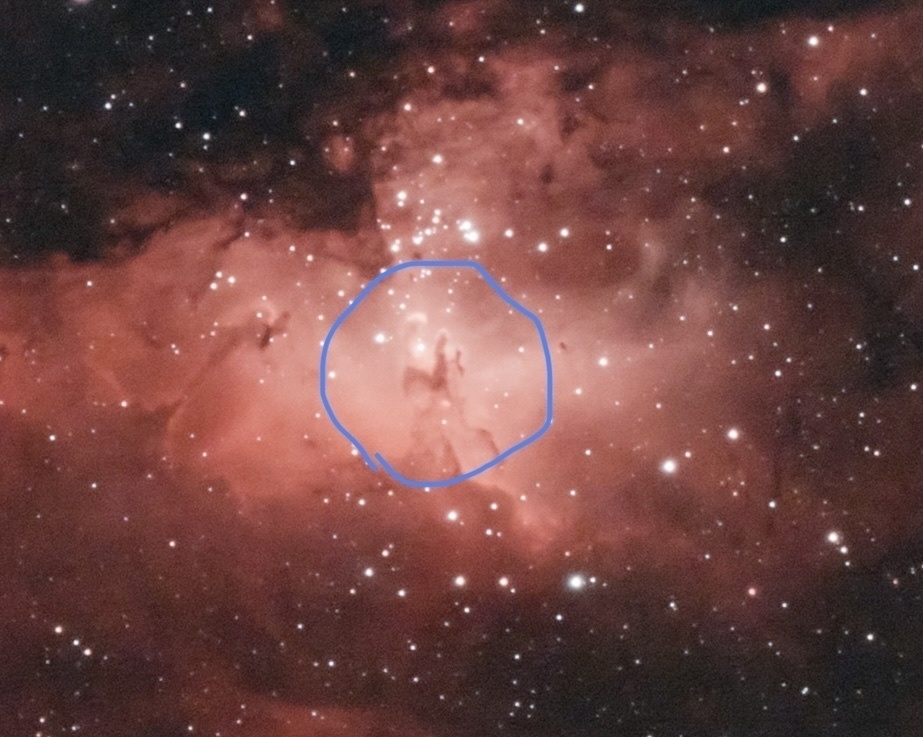
It was very satisfying to see that the "Pillars of Creation" were clearly visible in my image. The James Webb Telescope released its latest image of the pillars in midrange infrared light and it is just mind-blowing (see below). One can compare and quite obviously see the difference between a thousand dollar imaging setup and a billion dollar one. 😄
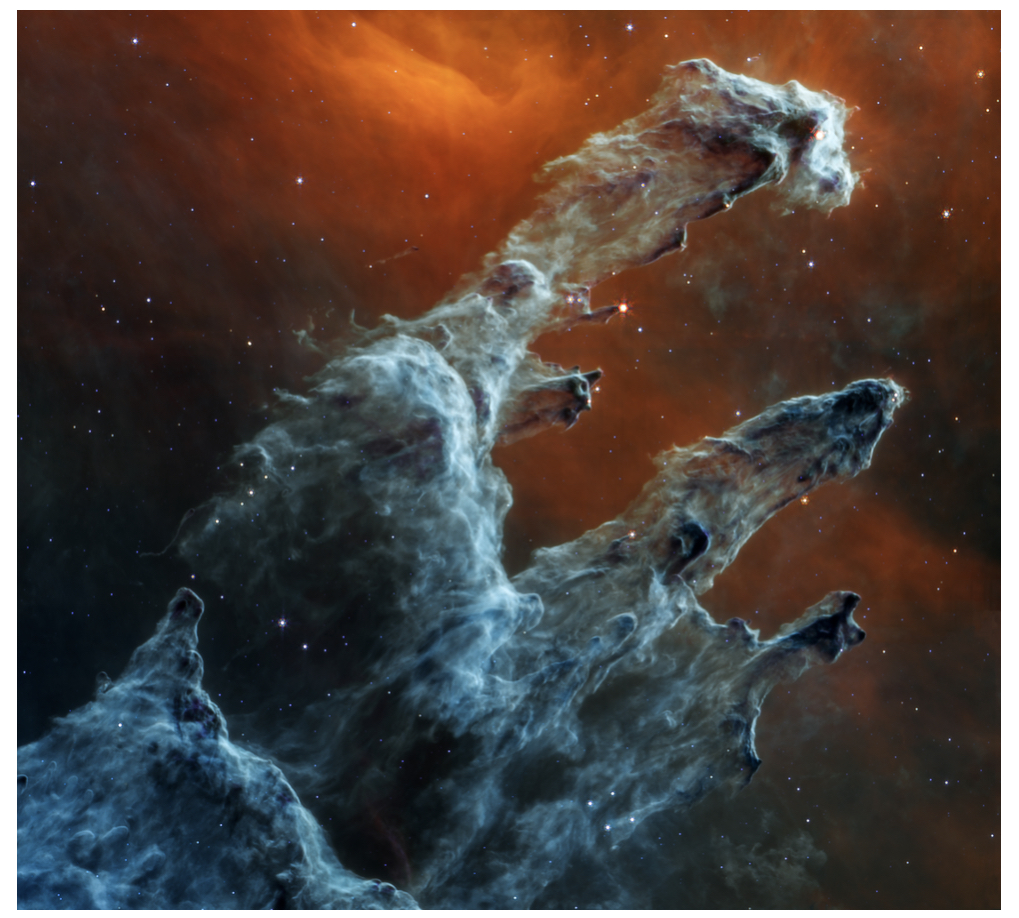
Telescope: WO ZS61
Camera: ASI533MC-Pro
Filter: Optolong L-eXtreme
Exposure: 50x1min
Processing: SIRIL and PS
